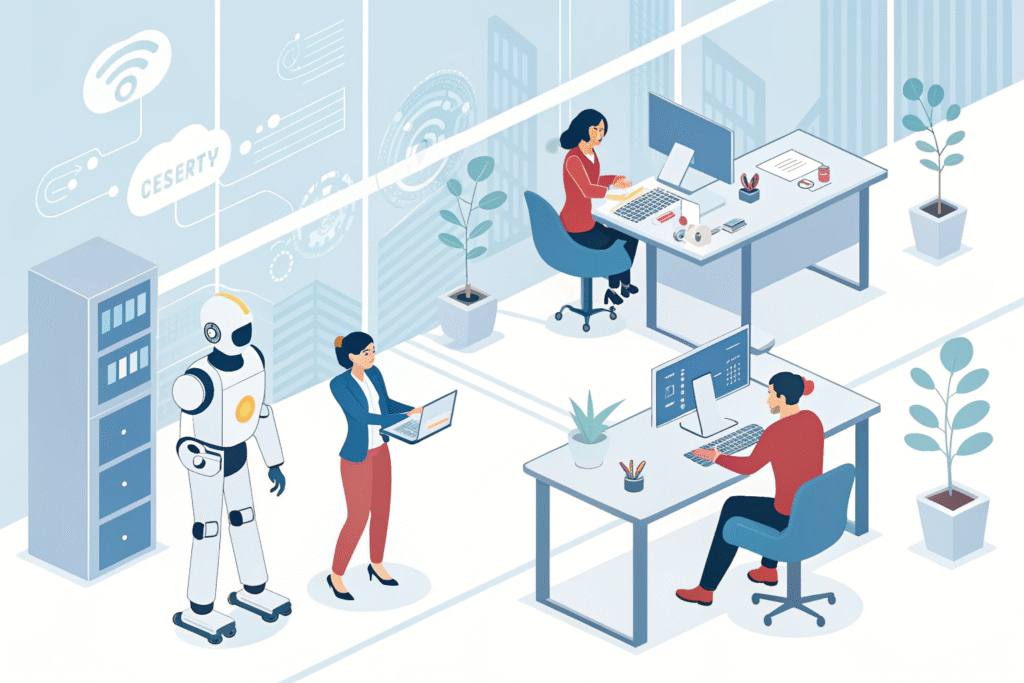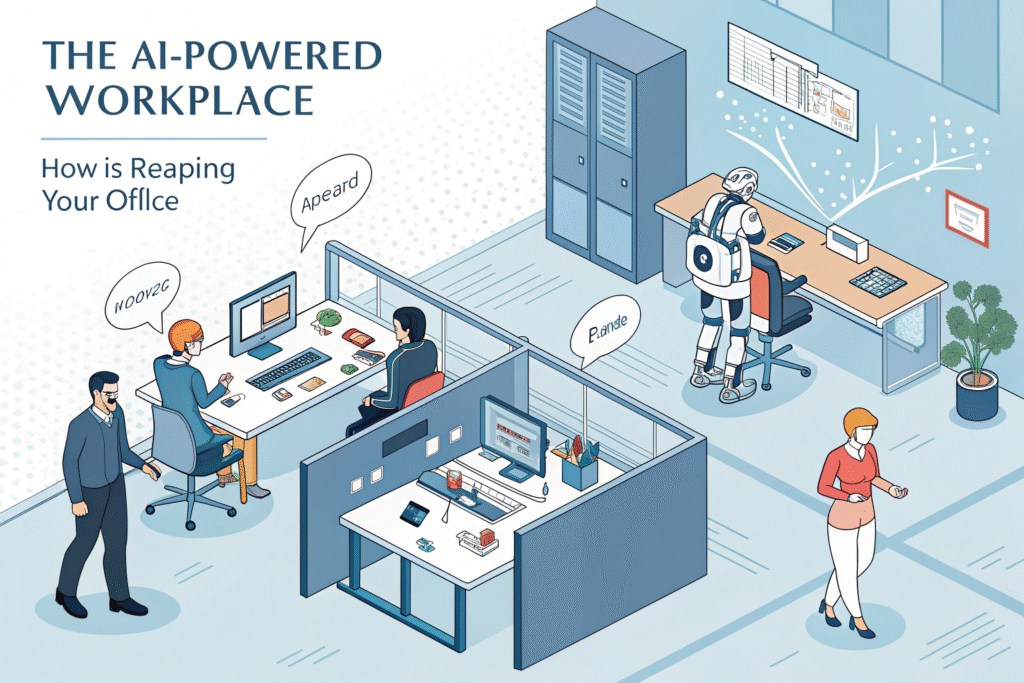
Introduction
From the factory floor to the corner office, a quiet revolution is underway. Understanding how AI is changing the workplace is essential, as AI integration is fundamentally transforming how we work, collaborate, and innovate. Today, knowing the impact of AI is no longer just a niche interest for tech experts—it’s a core skill for every entrepreneur, marketer, and content creator aiming to stay ahead. This transformation isn’t a distant scenario; it’s happening now, reshaping everything from daily tasks to long-term business strategies.
History & Evolution
The story of workplace technology is one of increasing intelligence and capability.
The Analog Era: Typewriters and filing cabinets ruled. Communication was slow, and data analysis was manual and time-intensive.
The Digital Revolution: Personal computers and the internet automated calculations and sped up communication. Software like spreadsheets and email became essential, but humans still directed every step.
The Dawn of Smart Tools: The 2010s introduced the first wave of “smart” software with basic automation and data insights. Tools were often siloed and required significant expertise.
The Generative AI Boom (Today): We now live in an era of proactive, generative AI. Tools don’t just organize data—they create content, provide strategic recommendations, and automate complex workflows, acting as collaborative partners.
Audience & Demographics
AI impacts different professional groups in unique ways:
Executives & Entrepreneurs: They leverage AI for high-level strategic decisions, market forecasting, and optimizing operational efficiency.
Marketers & Sales Teams: AI provides deep customer insights, automates lead scoring, personalizes campaigns, and generates creative content for A/B testing.
Knowledge Workers (Analysts, Developers, Writers): Their roles are shifting from repetitive tasks to curating, editing, and strategizing based on AI-generated outputs like code, reports, or drafts.
HR & Operations Professionals: AI streamlines recruitment by screening candidates, automates onboarding paperwork, and analyzes employee engagement to improve workplace culture.
Key Features & Functions
AI operates through several core functions that are transforming daily work:
Task Automation: Handles repetitive, rule-based tasks like data entry, scheduling, invoices, and reports, freeing up human time.
Data Analysis & Insights: Sifts through massive datasets quickly to identify trends, predict outcomes, and provide actionable insights.
Enhanced Communication: Offers real-time transcription, translation, and meeting summarization, breaking down language barriers.
Content Generation & Ideation: From writing drafts and social media posts to generating images and brainstorming ideas, AI acts as a creative catalyst.
Business & Marketing Potential
Strategic AI adoption unlocks significant advantages:
Massive Productivity Gains: Automating routine work allows employees to focus on strategy, creativity, and problem-solving.
Deeper Customer Understanding: AI analyzes behavior for hyper-personalization, improving satisfaction, loyalty, and conversion.
Accelerated Innovation: AI rapidly prototypes ideas, simulates scenarios, and analyzes market data, shortening innovation cycles.
Optimized Resource Allocation: From supply chains to marketing budgets, AI ensures resources are directed efficiently.
Best Practices & Tips
Successful AI integration requires a human-centric approach:
Identify the Problem, Not Just the Tool: Start with a pain point AI can solve rather than adopting it for novelty.
Prioritize Augmentation Over Replacement: Use AI to empower employees, removing mundane tasks and amplifying human skills.
Invest in Training and Upskilling: Prepare teams with effective and ethical AI training, fostering continuous learning.
Maintain a Human-in-the-Loop: Ensure humans review and approve critical decisions and creative outputs.
Choose Tools with Strong Data Security: Prioritize AI platforms with transparent privacy and security policies.
Challenges & Limitations
AI adoption isn’t without hurdles:
Data Privacy and Security: Feeding sensitive data into AI raises questions about ownership, storage, and breaches.
Algorithmic Bias: AI can inherit and amplify societal biases, leading to unfair outcomes.
Implementation Costs & Complexity: Integrating AI into legacy systems requires investment and change management.
Employee Resistance & Fear: Job security concerns and learning curves can hinder adoption.
Future Outlook
The Rise of the AI Co-pilot: AI will integrate deeply into software, offering real-time suggestions within the tools we already use.
Hyper-Personalized Employee Experiences: AI will curate personalized learning paths, well-being programs, and career development.
New Job Categories Will Emerge: Entirely new roles—AI ethicists, prompt engineers, automation specialists—will become common.
A Greater Focus on Uniquely Human Skills: Skills like critical thinking, creativity, leadership, and emotional intelligence will differentiate top performers as technical tasks become automated.

Conclusion
The question is no longer if AI will change the workplace, but how we guide that change. This transformation presents a profound opportunity. For business leaders and professionals, the mandate is clear: embrace adaptation and continuous learning.
By fostering collaboration between human intuition and machine intelligence, we can build workplaces that are efficient, productive, and creative. Additionally, they become more fulfilling and human-centric. The future of work belongs to those who harness AI to enhance their unique human capabilities.